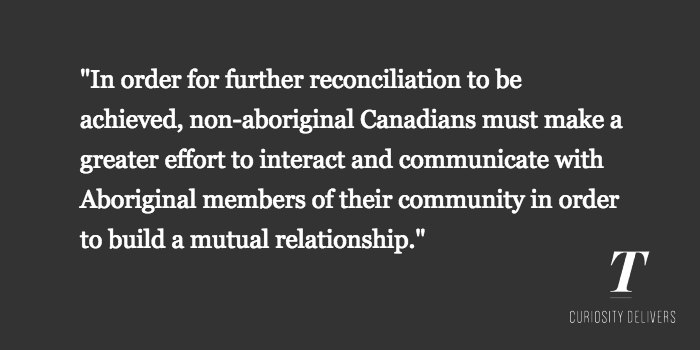Throughout the many changes and evolutions in Canada’s history, there is one issue that has always plagued the nation: The inability to meet the needs and demands of Aboriginal peoples; however, recently, after many years of negotiations and struggles, three Innu nations are on the verge of reaching a historic land settlement agreement with the federal and Quebec government.
In retrospect, this welcome news has come with impeccable timing. Last summer, the Truth and Reconciliation Commission (TRC) released a report on Canadian Aboriginal residential schools, which prompted Canadians to rethink their country’s treatment of Aboriginal peoples, and recommended several changes that the Canadian government should implement to make amends with the Aboriginal population.
Although none of the proposed suggestions were directly about land claims, it is unmistakable that this recent agreement between the nations and the government is a step towards making amends by recognizing the sovereign rights of the Aboriginal peoples, which was the overarching aim of the TRC recommendations. But in order for further reconciliation to be achieved, non-aboriginal Canadians must make a greater effort to interact and communicate with Aboriginal members of their community in order to build a mutual relationship. This will pave the way for further political actions to correct historical inequality and bridge the gap between governmental policies and the tangible reality of friendship between non-Aboriginal and Aboriginal people in Canadian society.
Reconciliation with Aboriginal peoples has a deeper meaning than compensations and land settlement agreements. It requires the nation to respect the ideas and opinions of Aboriginal people and realize their vital role in Canadian society. In part, this calls for increased educational content about Aboriginal peoples in Canada in school curriculums, which was among the TRC’s recommendations under “Education for Reconciliation.” However, a government-introduced curriculum is only a small facet of this objective; it is also imperative that there is increased direct communication between non-aboriginal and Aboriginal communities in order to facilitate a personal understanding of the needs and values of Aboriginal peoples of Canada.
The importance of community relations in aiding political agreements can be seen in the land settlement issue. Marc Chaloup, who represents the Essipit Innu, explained that protests from local communities were a large barrier to reaching an agreement on the treaty.
“We’ve had people protest in neighbouring communities — they took to the streets and yelled, ‘No treaties for the Innu,’” Chaloup said. “They carried signs that said, ‘No to the treaty.’ They lobbied the government. It was rough.”









